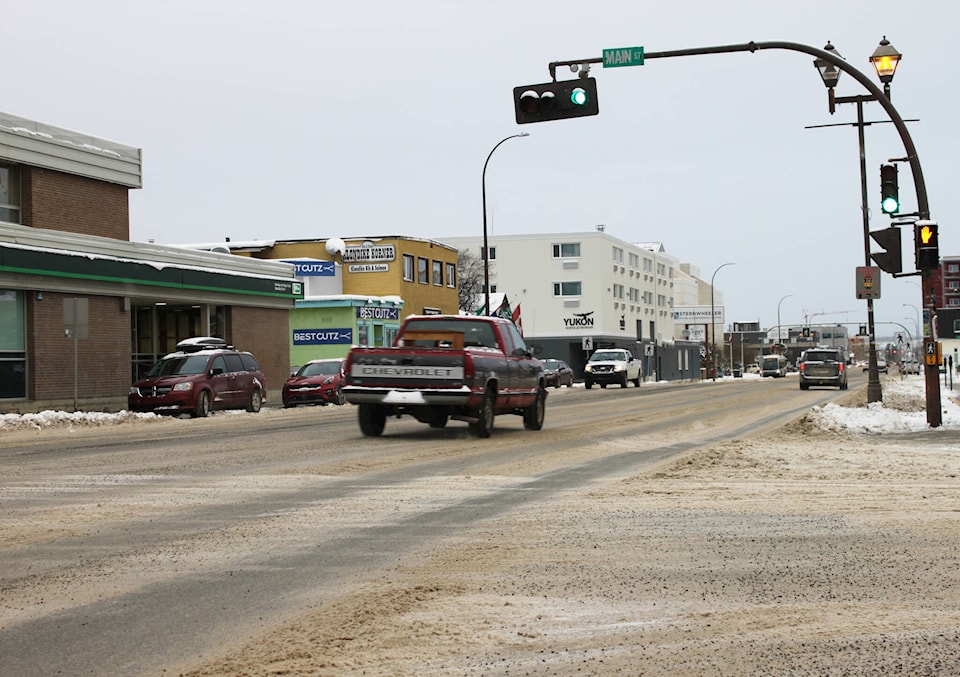Whitehorse residents want improved traffic safety and routes around town, all while focusing on climate action and sustainability.
Those are among the themes coming out of the first phase of public engagement for the City of Whitehorse’s Transportation Master Plan (TMP).
A focus on core services, like winter snow clearing and transit, and complete street design were also highlighted by many who provided input.
The city released its summary report on the first phase of engagement for the plan, detailing feedback received from close to 190 surveys, 20 stakeholder meetings and the 100 people who attended virtual and in-person sessions about the plan, which sets the direction for moving people and goods around the city to 2040.
As the summary report states, the city has grown in recent years, with a population of more than 30,000. It’s expected that will increase to more than 40,000 in another 20 years.
“With growth, we need to re-evaluate how people and goods move throughout the city,” the summary reads.
“As we set the vision for our updated Transportation Master Plan, there are important decisions and meaningful discussions to be had as individuals and as a city towards developing and shaping an accessible, equitable, safe and sustainable transportation network and ultimately a vibrant and livable Whitehorse.”
The survey found the majority of respondents — 54 per cent — live less than five kilometres from work or school with 32 per cent within five to 10 kilometres and 14 per cent more than 10 kilometres away from work or school.
Driving a vehicle is the most common way residents get around town, both in the summer and winter months, with more than 60 per cent indicating they always or often drive or get a ride. Transit, meanwhile, is used the least with walking and cycling in the middle (though there is higher use in the summer months). Despite that, many described driving as “the least desirable transportation mode” and stated they want to see improvements to sustainable transportation options.
Among the top policy priorities survey respondents listed were accessible design standards, increased bicycle parking requirements, a review of speed limits in the city, and a requirement for EV charging stations in new developments.
Top picks for capital priorities favoured active transportation, pedestrian crossings and transit infrastructure followed by intersection traffic control, a Safe Routes to School Program, traffic calming in residential areas, addressing traffic capacity with changes in the road way (such as widening roads) and the movement of commercial goods.
Meanwhile on the operating side, winter maintenance of active transportation routes, transit service, response to traffic incidents and a real-time system to help residents decide on routes and departure times were identified as priorities.
The summary went on to outline input received from groups, stakeholders and others, many who put emphasis on active transportation.
It’s clear the community wants to rethink movement through the city, the summary states.
“There is significant desire to increase transportation options, work towards safer streets, focus on core transportation services, develop complete, inclusive, and accessible streets, adapt to and mitigate the impacts of climate change, and promote sustainable transportation options,” it reads. “Project staff will use these key themes heard in phase 1 engagement to develop the guiding vision, values, and goals and the draft TMP.”
As work on the plan continues, the next webinar is scheduled for Nov. 15. Those wanting to participate can register online at EngageWhitehorse.ca.
Further work to look at transportation modelling, network requirements and an implementation strategy will follow with the draft plan expected to come forward in May 2023.
A second engagement phase will be held later in the spring before the final document comes forward for Whitehorse city council’s consideration.
Contact Stephanie Waddell at stephanie.waddell@yukon-news.com
